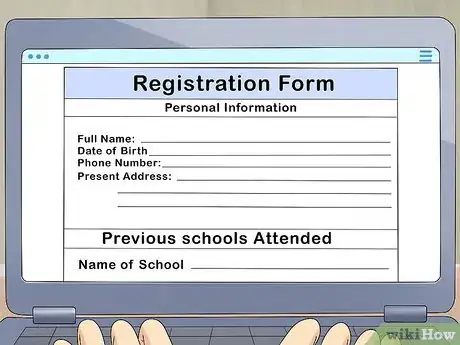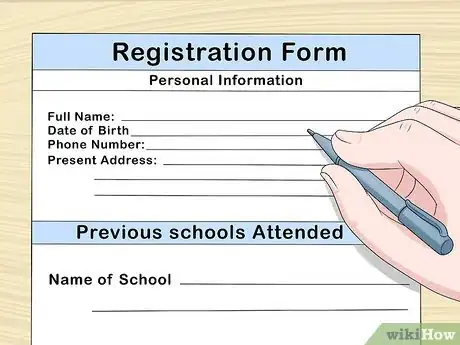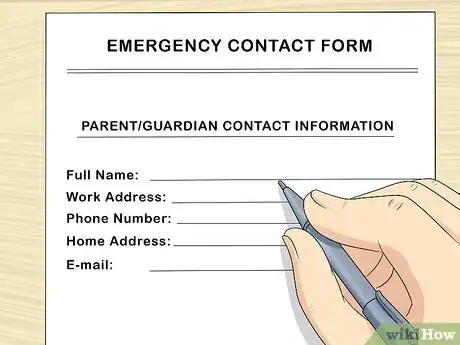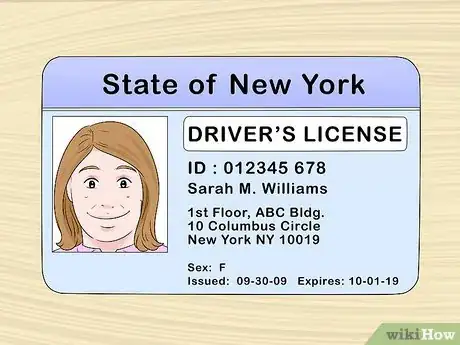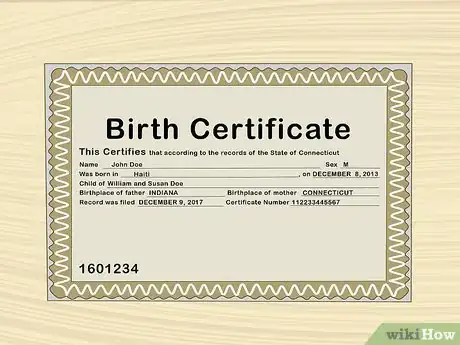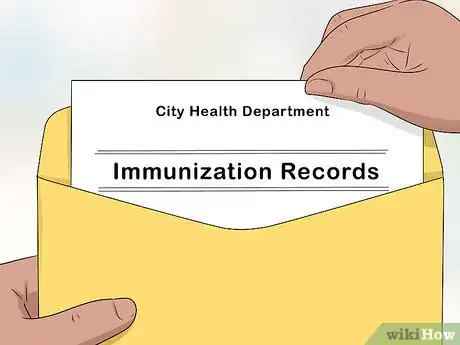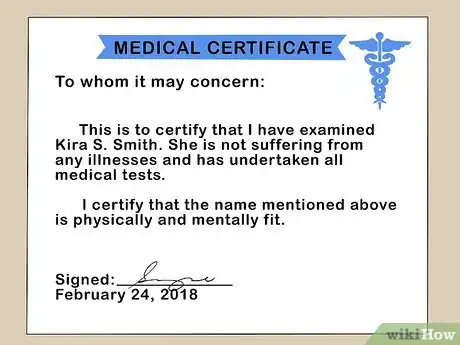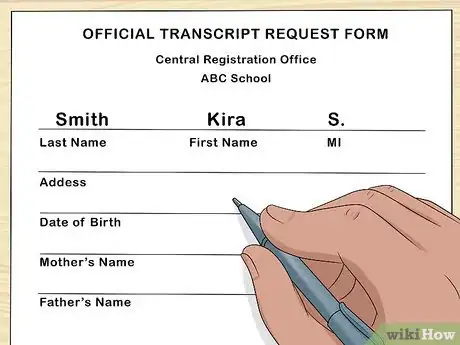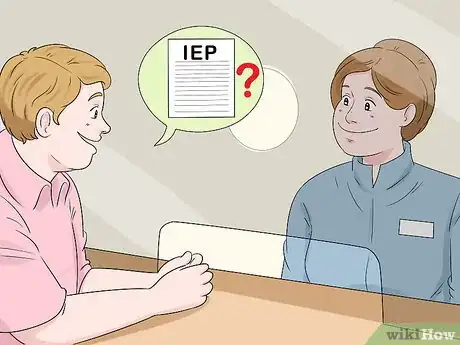This article was co-authored by wikiHow Staff. Our trained team of editors and researchers validate articles for accuracy and comprehensiveness. wikiHow's Content Management Team carefully monitors the work from our editorial staff to ensure that each article is backed by trusted research and meets our high quality standards.
There are 13 references cited in this article, which can be found at the bottom of the page.
This article has been viewed 163,167 times.
Learn more...
Whether you’re enrolling your child in school for the first time or switching schools after a recent move, the registration process is simple. Head down to the central registration office for your school district and complete the necessary registration forms. You’ll need to bring a few important documents along with you, including proof of your child’s age, residence, immunization status, and education records. Once the school system has copies of these documents on file, your child will be officially admitted and will be able to attend school within 5 business days.
Steps
Identifying Your Enrollment Options
-
1Figure out which school district your child is zoned for. Children attending public school are assigned to different school districts depending on where they live. To find out which district your child is zoned for, put in a call to your city’s Student Assignment Office.
- You can also take a look at a district boundaries map or use a school zone locator tool online to find out where to enroll your child.[1]
- By law, your child is required to go to the school designated by their district.
-
2Visit the central registration office for your school district. This is where all matters involving student enrollment and documentation are handled. You’ll need to return to your district’s central registration office if you’re re-enrolling your child following a transfer or expulsion.
- It’s not necessary for your child to be present during registration.
Advertisement -
3Register your child for school online. These days, most school districts have websites set up to simplify the registration process for busy parents. After determining which school your child is zoned for, visit the home page of the school's website to look for a link to the registration site. There, you'll be able to enter your child's information, upload documents, and read up on important school policies and deadlines, all from one convenient hub.[2]
- If you're enrolling your child in a school for the first time, it might be necessary to scan and upload digital copies of each of the required registration documents, such as proof of residence and immunization forms.[3]
- Some school systems may only allow returning students to register online. Review the site's enrollment guidelines to see whether your child is eligible for online registration.
Getting the Necessary Paperwork in Order
-
1Fill out a student registration form for your child. You’ll be asked for a few basic pieces of information about your child, including his or her full name, date of birth, current address, and previous schools they’ve attended. The form may also ask you to specify your child’s first language.[4]
- Make sure the information you provide is complete and accurate to the best of your ability.
-
2Complete an emergency contact form. Your child’s new school will need to know who to get in touch with in the event of a medical emergency. As a parent, it’s a good idea to list yourself as a contact, along with a one or two other responsible individuals who often look after your child, such as a grandparent or older sibling.[5]
- Don’t forget to make a note of any medications your child is currently taking, as well as existing medical conditions the school might need to know about.
- Coaches, caseworkers, and trusted family friends might also be good candidates for emergency contacts.
-
3Provide proof of residence. Most school systems ask the registering parent or guardian to present a couple different documents to show that their child will be attending school in the correct district. The first is a piece of personal ID, like a driver’s license, bank statement, or vehicle registration. The second is an up-to-date mortgage statement, property tax form, or utilities bill displaying your current address.[6]
- You'll usually have quite a few different options for confirming your residence, so there's no need to worry if you're new to the area and haven't updated your driver's license or other personal ID yet.
- For a complete list of forms that can serve as proof of residence, look through the student registration resources found on your local school district’s website.
-
4Show proof of the child’s age. Next, you’ll need to produce any one of the following documents—original birth certificate, passport, baptism or religious certificate, or past education records. In some states, the parent or guardian can also present a notarized affidavit signed by a public health official stating his or her age.[7]
- The school district is not legally allowed to ask for your child’s social security card or number, mental health records, or immigration status.
- It’s important for the school to know your child’s exact age so that they can confirm their grade level placement.
-
5Bring along a copy of your child’s immunization records. You can obtain immunization records from the past year by contacting your city’s health department. These documents verify that your child has been vaccinated within the last 12 months. They must be signed by a state-licensed physician or public health official in order to be considered valid.[8]
- If you’re not sure what vaccinations are required for your child to attend public school, the answer may be found in the immunization guidelines published by your local health department.
- Your child may be able to attend school without having their immunization records on file if they qualify for an exemption on religious or medical grounds.[9]
-
6Submit the results of your child’s recent medical exams. Some states or provinces also require evidence of a full medical markup or physical for students being enrolled for the first time. As with immunization, the medical exam must have been performed sometime within the last 12 months.[10]
- Students who will be attending a new school for middle or high school may also have to undergo a medical exam.
- Check the registration requirements for your child’s school district to see if it’s necessary to turn over a copy of their medical records.
Finalizing Your Child's Enrollment
-
1Request a copy of your transferring child’s transcripts. If your child is coming over from a different school, don’t forget to ask that his or her grades be sent over ahead of them. That way, they’ll receive credit for the work they’ve already done. The secretary at the central registration office will see that the transcripts find their way into the right hands.
- Be prepared to fill out a transcript request form for your child if they’re under the age of 18.[11]
- It's your responsibility to make sure your child’s transcripts get passed along every time they switch school districts.
-
2Ask about special programs. If your child is in need of an individualized education program (IEP), second language course, or outside tutoring, see if it’s possible to sign them up while you’re already at the registration office. You might be able to save yourself a separate trip or series of forms later on.[12]
- The school district will need a copy of your child’s old IEP so that they can give them the attention they need.
- Information on extracurricular activities like TAG programs and special interest clubs is often available during enrollment.
-
3Pay any attendant fees. Some public school systems charge a small fee whenever you’re registering your child for a new school year. This money goes toward making sure students have access to meals, textbooks, educational software and other resources instrumental to their education. You can pay your child’s school fees in person at the central registration office.[13]
- Registration fees typically add up to around $50-100 per student.
- For the sake of convenience, ask the secretary for a link where you can go to pay your child’s fees online.
-
4Check your child’s registration status after 5 days. Make a followup call to the central registration office and ask them to confirm that everything is in the proper order. The attending secretary will be able to alert you of any errors, missing documents, or other issues that could be causing a delay.
- Your child’s name should be added to their new school’s register no more than 5 business days after completing the necessary registration paperwork.
- If for any reason your child is not allowed to start school after being enrolled, file a formal complaint with the Department of Education for your state, province, or territory.
Community Q&A
-
QuestionHow do I enroll my son in kindergarten?
 Drew Hawkins1Community AnswerStart by figuring out your school district. Call your city's Student Assignment Office. You can also take a look at a district boundaries map or use a school zone locator tool online to find out where to enroll your child. Once you know the district, you'll be able to figure out which school your child can attend. Visit the school's website and enter your child's information, upload documents, and read up on important school policies and deadlines. You may need to scan and upload digital copies of the required documents. Once you're registered, you're all set!
Drew Hawkins1Community AnswerStart by figuring out your school district. Call your city's Student Assignment Office. You can also take a look at a district boundaries map or use a school zone locator tool online to find out where to enroll your child. Once you know the district, you'll be able to figure out which school your child can attend. Visit the school's website and enter your child's information, upload documents, and read up on important school policies and deadlines. You may need to scan and upload digital copies of the required documents. Once you're registered, you're all set! -
QuestionAre public schools in USA free?
 Drew Hawkins1Community AnswerYes, in the US, all children have access to free public schools. However, your child must attend a school in your school district, which is a designated region in your city. Look up your city's school district website and find out what district your address is in. From there, you can register your child for a school within the district. Private and religious schools in the US often require tuition in order for your child to attend.
Drew Hawkins1Community AnswerYes, in the US, all children have access to free public schools. However, your child must attend a school in your school district, which is a designated region in your city. Look up your city's school district website and find out what district your address is in. From there, you can register your child for a school within the district. Private and religious schools in the US often require tuition in order for your child to attend. -
QuestionWhat do you need to register child for school?
 Drew Hawkins1Community AnswerMost schools will have a list of required documents that you need to provide in order to register your child to attend. Usually, you'll need a piece of personal ID, like a driver's license, bank statement, or vehicle registration. You'll also need a way to verify your address to make sure you live in the school district. You can use an up-to-date mortgage statement, property tax form, or utilities bill that lists your address. Look through the student registration resources found on your local school district’s website to see if there are any other documents you need to provide as well. You'll also need to produce your child's birth certificate, passport, or previous education records to show proof of their age. Bring your child's latest immunization records as well to show that they're up to date on all of their shots.
Drew Hawkins1Community AnswerMost schools will have a list of required documents that you need to provide in order to register your child to attend. Usually, you'll need a piece of personal ID, like a driver's license, bank statement, or vehicle registration. You'll also need a way to verify your address to make sure you live in the school district. You can use an up-to-date mortgage statement, property tax form, or utilities bill that lists your address. Look through the student registration resources found on your local school district’s website to see if there are any other documents you need to provide as well. You'll also need to produce your child's birth certificate, passport, or previous education records to show proof of their age. Bring your child's latest immunization records as well to show that they're up to date on all of their shots.
References
- ↑ https://www.greatschools.org/school-district-boundaries-map/
- ↑ http://www.scsk12.org/registration/
- ↑ https://www.homeaffairs.gov.au/trav/citi/pathways-processes/application-fees-forms-and-appeals/guidelines-on-attaching-documents
- ↑ https://1.cdn.edl.io/iSFMv1SzpEVAmZr5Mupb9D8N3RsA9u7AWTn4NTQgGNLxOW7y.pdf
- ↑ http://www.broward.k12.fl.us/ets/css/recret/recordsret/pdfs/StudentEmergencyCard4172.pdf
- ↑ http://browardschools.com/Parents-Students/Parent-Student-Pages/Register-My-Child-in-School
- ↑ https://1.cdn.edl.io/rZWOsB3zP9DMXVxkQm7tGNVD7SiaatmvUfDjGLcq9dsRnWSW.pdf
- ↑ https://www.ocps.net/departments/student_enrollment/new_student_registration/
- ↑ https://www.dshs.texas.gov/immunize/school/exemptions.aspx
- ↑ http://cps.edu/Schools/Enroll_in_a_school/Register/Pages/Elementaryschoolregistrationchecklist.aspx
- ↑ https://www.daltonpublicschools.com/uploaded/Dalton_Public_School/About/DPS_Transcript_Request.pdf
- ↑ https://jeffco.ss12.sharpschool.com/programs/special_education
- ↑ http://www.dailyherald.com/article/20130821/news/708219933/
About This Article
Registering your child for school is usually a simple process, and all you'll need to do is fill out the necessary paperwork for the appropriate school district. In general, you should be able to get the relevant forms from your school district's website, or by contacting them by telephone. You'll need to include some documents about your child as well, such as proof of immunization and proof of residence. There could also be a registration fee that you'll need to pay to the school district. The registration process can vary slightly depending on where you live, so it's best to contact your school district for specifics about the process in your area. For tips on how to register your child if they’re transferring schools, keep reading!


